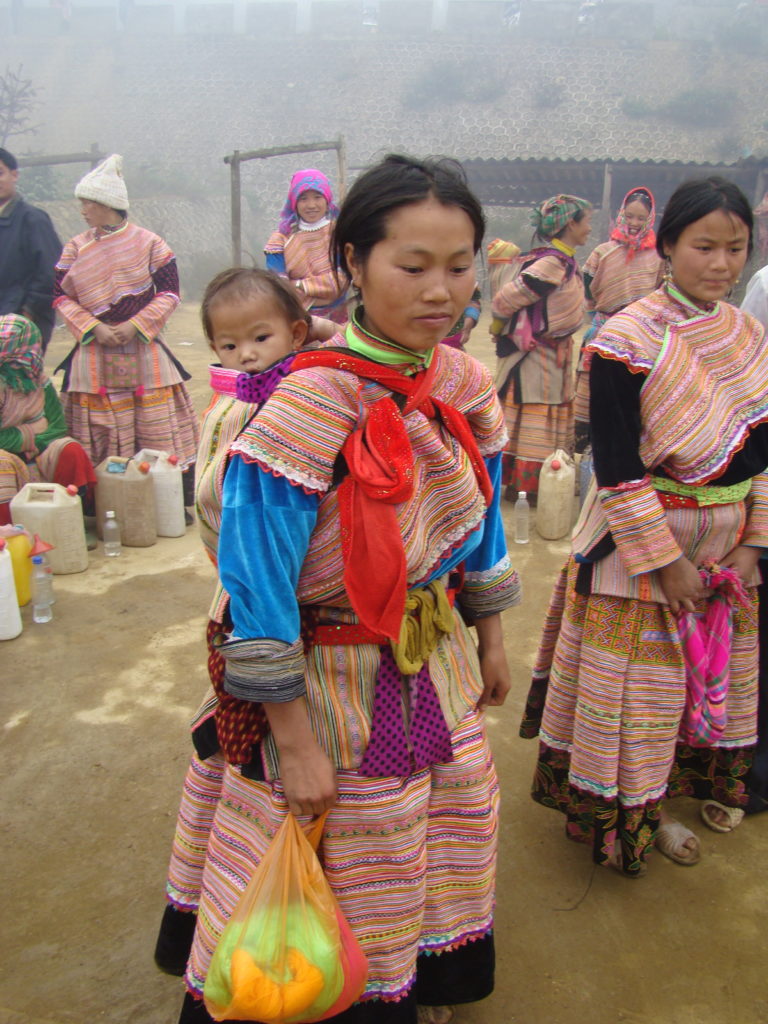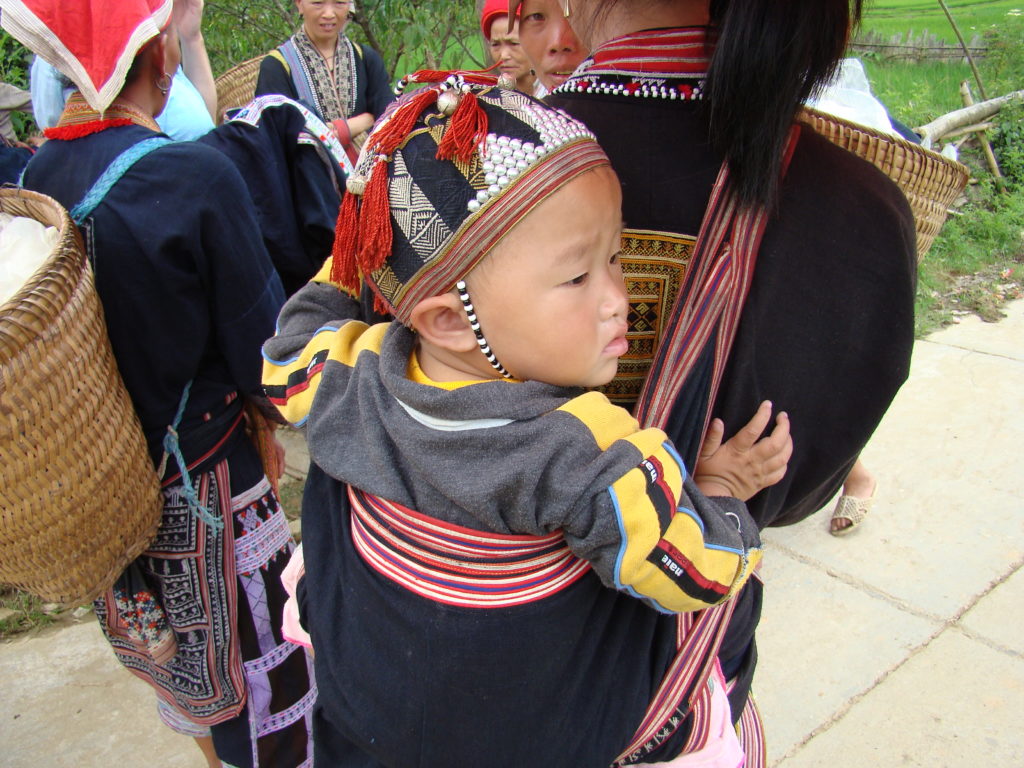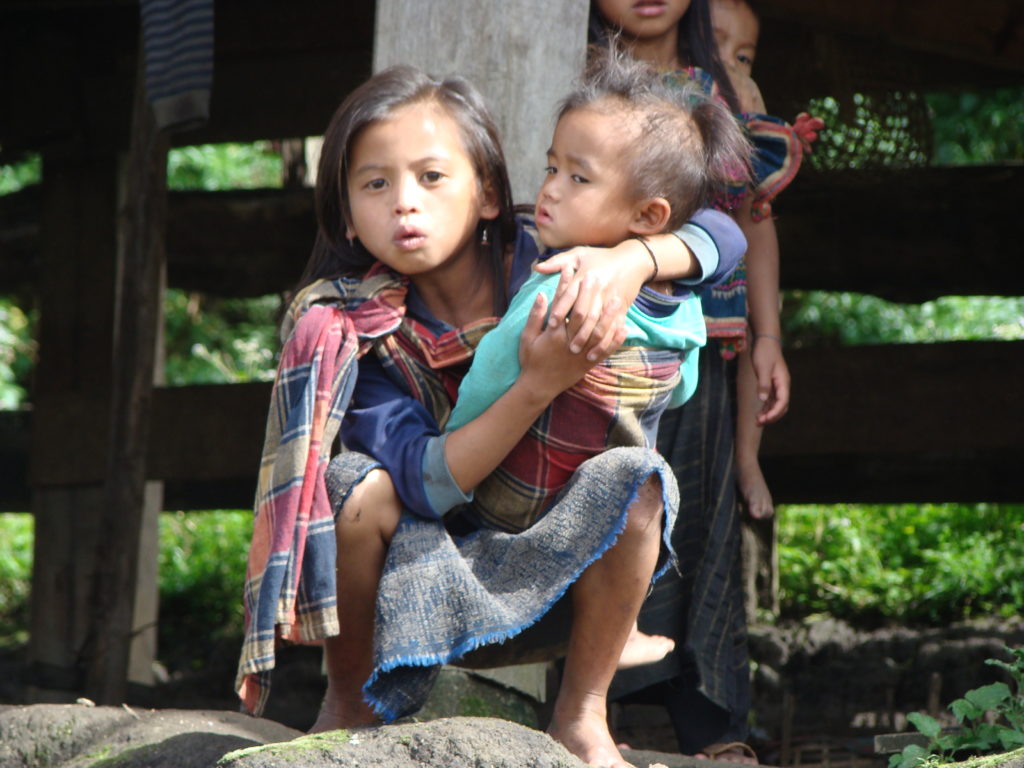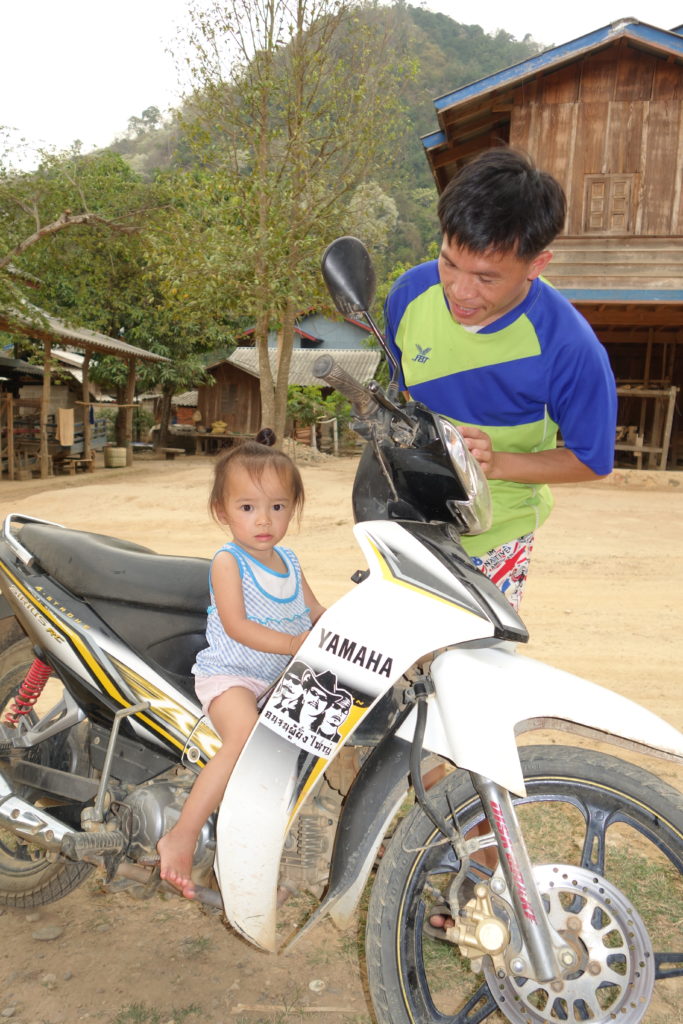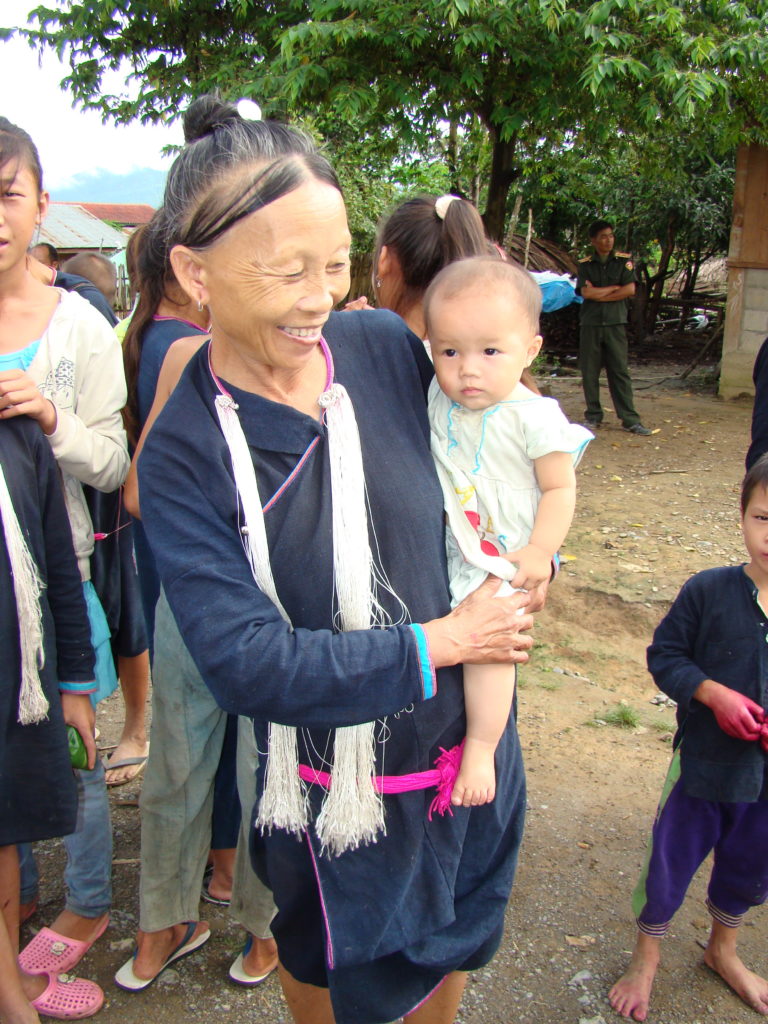Little Kids in Hill Tribe Laos and Vietnam
In our last blog, we detailed the lives of school-age children (age 6-16), who generally have regular chores (such as weaving or farm work) in modern village life in hill tribe Laos and Vietnam. Infants and little kids up to five-year-olds, however, appear to Maren and me to live in a most ideal world: one that is full of affection, attention, freedom, and play.
From day one, infants are held close to the mother’s (or another person’s) body at virtually all hours of the day. Working mothers, whether in the field, at the loom, or cooking over the hearth’s fire, often have an infant strapped on their back. If mom isn’t available (or is finally able to catch a quick nap), there’s grandma, or a big brother, sister or aunt, or neighbor, available to assure the youngster is safe and close. In that regard, it is rare to hear infants cry for more than a second or two, if at all, and they seem to live by the tenet: You can’t over-spoil an infant. In many homes, grandmothers especially play a central role assisting with infants and raising young children.

Blue Hmong woman shows off her beautiful son and her hand-dyed and embroidered baby carrier (with acrylic factory-made edging).
The regional textiles mirror this focused responsibility and nurturance, and every ethnic group has unique designs and motifs for infant-wear. The Red Dzao of northern Vietnam have a special hat designed by the ancestors to protects infants from nefarious spirits. These red and black hats are covered in radiant designs of white seed-beads, cowry shells, small coins, and/or fluffy tassles – all symbols of good luck and protection. Tradition holds that a spirit looking down from above would only see this red and black flower design (and not the child under the hat), and thus move on, leaving the child unharmed. The Tai Daeng people of NE Laos have a special children’s blanket called a phaa tuum, and its motifs often reveal the phii nyak, a vicious traditional spirit known to protect the innocent. The multi-paneled baby carriers of the Black Hmong are renowned for their extremely intricate (and time-consuming to create) indigo-batik designs.
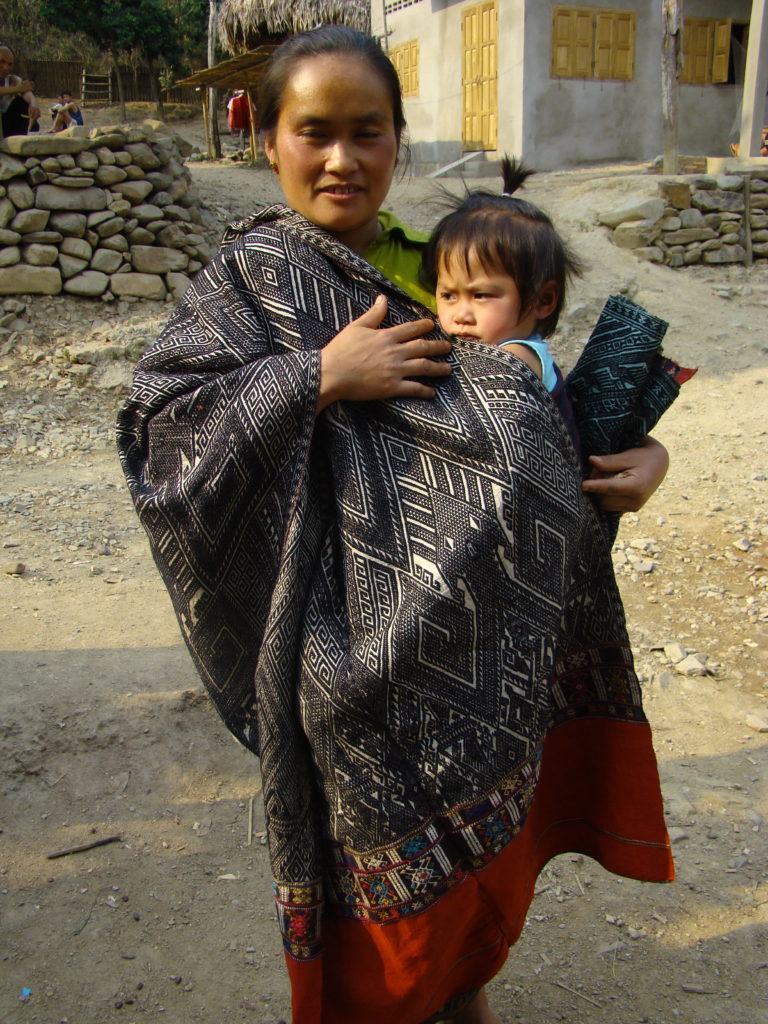
Tai Daeng woman wrapping her baby in a phaa tuum. The central head and curly arms of a phi nyak can be seen. This blanket is indigo-dyed cotton on silk; the zone-dyed red is made from the excretion of the scale bug called lac.
Once kids are mobile, perhaps age 1½ or 2, the entire village becomes their playground for about 3 years. In truth, we’ve yet to be in a small village where the prevalence of its youngest members is not central to the energy, cheer, and attention of the village activities. And yes – from this writer’s standpoint I’d say that they mostly get to “run wild,” as long as they stay reasonably safe, get along with others, and respond to an elder’s directive (assuming they’re within earshot…). The 4 and 5-year-olds are often the first to greet a village visitor as they are out playing on the village periphery. From a textile standpoint, there is little to note here – quite literally – as these are often the “clothing optional” years for both boys and girls. Cool weather brings out cheap western-style shirts (and, if potty trained, pants).
We notice that everyone in the village seems to carry responsibility for the young ones. Every adult or older sibling seems ready to help manage a youngest’s true needs. Indeed, one of the central tasks of the older children is to look after the well-being of the younger, just-mobile kids.
Very often, older members of the community will look after the children during “work hours” while the able-bodied parents are off doing physical labor. The grandparents (who may or may not be grandparents by blood) seem to relish this supervisory role as they sit in the shade of their home surrounded by the buzz of youth at play. The elders are often involved in a home-bound task, perhaps shaping bamboo strips for basket weaving or spinning cotton with their spindle. As in many village-centered cultures around the world, grandparents often act as “first parents” to children, at least during the day. But we also note that the small kids do tend to care for themselves and look after each other quite well – grandparents are called on only for more serious boo-boos, or perhaps to put together a meal.
And toys? Don’t get us started! Every old bicycle tire, every stick or plastic bottle, every rain-swollen ditch, every ball (whether store-bought or a wrap of rags), every puppy and frog and bug and puddle, every thing you can grasp in your hand – Oh my gracious! – The world is so full of treasure when imagination and friends are sailing together at full mast!
[Note: Throughout northern Laos and Vietnam, people appear well-fed and comfortable; kids of all ages seem healthy and engaged. Food, water, and shelter, while often basic, seem to be readily available for the vast majority. However, we are aware that our “traveler’s vantage point” may limit our ability to see or gain access to communities where basic needs are not met.]

